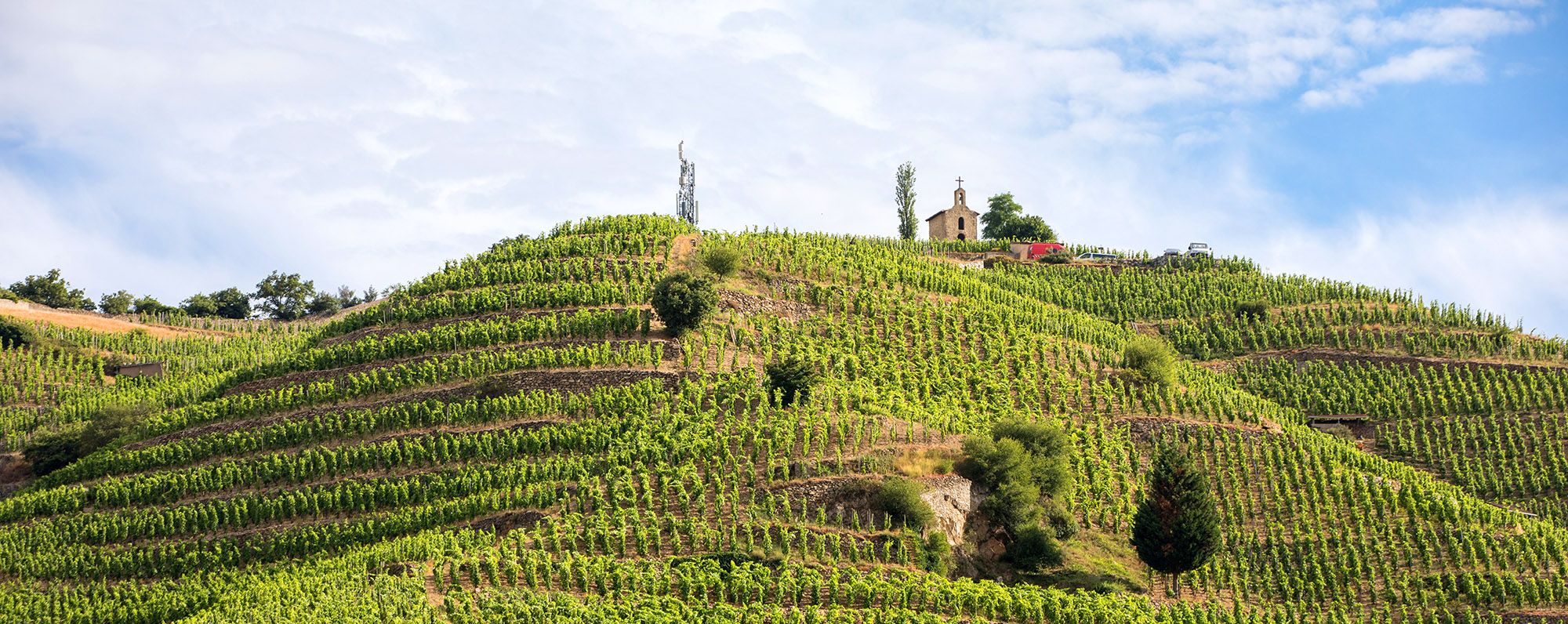
Author: Randy Hamilton
Someone once told me that a Hermitage Wine was a gateway wine and that every wine lover should try it. But beware, I also hear you will love it and it will cause you to seek out other wines that can match it. What begins as a small curiosity to find such exquisite wines soon becomes a flood of obsession. Well, I hope it never becomes an obsession as I would need to go back to college and find a new career that pays a lot more money because Hermitage wines are not cheap. And the wines you will seek to try and upstage a Hermitage will surely cause a dent in most budgets. So far I have yet to advance beyond a Croze-Hermitage wine, which is a step down from the actual Hermitage. I found the Croze-Hermitage my wine to compare and outdo other French wines. I guess that makes the Crozes-Hermitage my gateway wine.
Crozes-Hermitage and Hermitage are both appellations of the Northern Rhône Valley in France, but they refer to different wines.
Crozes-Hermitage is a larger appellation that produces both red and white wines. The red wines are made from the Syrah grape, which is the same grape used to make Hermitage wines. However, Crozes-Hermitage wines are generally considered to be less complex and refined than Hermitage wines.
On the other hand, Hermitage is a smaller and more prestigious appellation that produces only red wines made from the Syrah grape. Hermitage wines are considered to be some of the finest and most complex red wines in the world.
Hermitage is located along the left bank of the Rhône River near the town of Tain l’Hermitage and it produces some of the most renowned red wines in the world. The region’s temperate climate and granitic soils create a unique terroir that allows for full-bodied, intense, and complex red wines to be produced year after year.
The history of Hermitage dates back to pre-Roman times when local vineyards had long been cultivated in this area. However, convent-owned vineyard plots called “ermitages” began popping up around the 12th century throughout Europe as Franciscan monks sought to find land suitable for cultivating vines for sacramental wine. Eventually, one such plot located near Tain became known as “L’Hermitage”, which eventually gave rise to the name “Hermitage” as we know it today.
The most commonly used grape variety here is Syrah which makes up over 90% of plantings in this region alone. Besides Syrah, white varieties such as Marsanne and Roussanne are also grown though they make up a small percentage (less than 10%) compared to reds. When blended together into a Hermitage AOC wine, these two varieties must total no more than 20%. In terms of aromas and flavors, Syrah-based wines from Hermitage tend to express notes of dark fruits (plums & blueberries), violets, black pepper and exotic spices depending on each vintage and producer.
Aging is another component that has come to define Hermitage wines as many years spent slumbering inside oak barrels can produce remarkable expression found within this unique terroir while intensifying certain characteristics such as body and tannins over time. Traditional aging practices still remain but many producers are beginning to experiment with alternative methods like concrete tanks or even stainless steel without much oaking at all in order to better express what their particular vineyards have to offer in terms of flavor, aroma and complexity.
This place has become a mecca for wine enthusiasts, many of whom make it a life ambition to make a pilgrimage to the Hill of Hermitage and visit the Chapel of St Christopher (La Chapelle). This chapel was built in 1864 on the site of an earlier chapel that had been here since the 12th century. Some day I too would like to make this trek and perhaps sample my first actual Hermitage wine on the storied land where it was produced.
